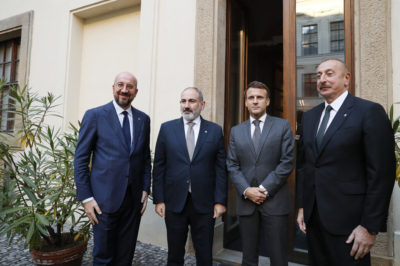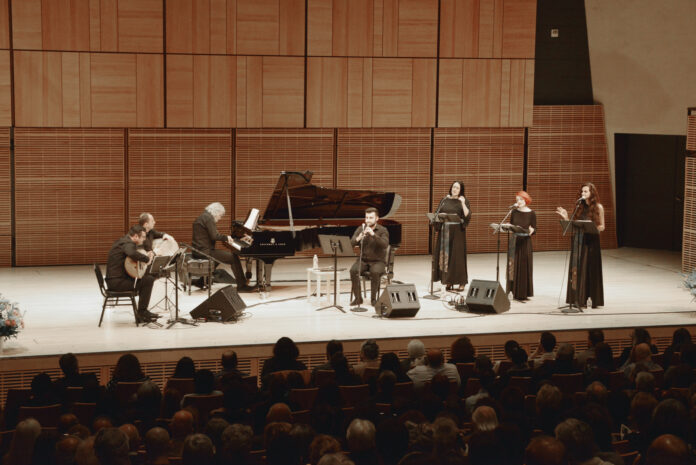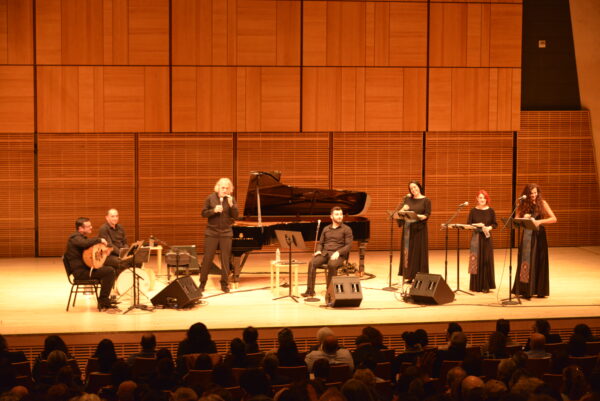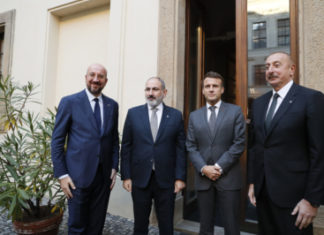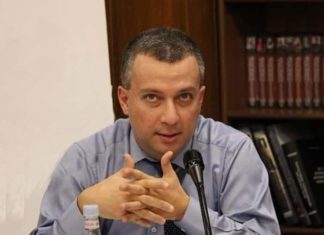By Florence Avakian
NEW YORK — On March 11, a sold-out house of Armenian and non-Armenian music lovers were treated to a unique and magical style of mystical music by the Naghash Ensemble at the Zankel Hall of Carnegie Hall. The fame of the group was apparent as the huge crowd gave a thunderous ovation as the performers strode onto the stage decorated with large bouquets of spring flowers.
Sponsored by the Eastern Prelacy of the Armenian Church, this event was the 38th Musical Armenia concert that has previously launched the musical careers of budding Armenian artists. Also attending was Armenia’s Ambassador to the United Nations Mher Margaryan.
Archbishop Anoushavan Tanielian, Prelate, called Musical Armenia “a sublime expression of our shared human condition.” Art, he said, “and more specifically music, are perhaps the highest shortcuts to our sense of the divine.”
This concert took a different turn as it presented artists who are already the top professionals in their fields — an American born composer and pianist who created and directed the stirring music, and from Armenia three top-notch singers and three instrumentalists playing the authentic Armenian duduk, shvi, pku, zurna, oud, dhol, daf, and dumbek.
However, the real inspiration of this performance was the spiritual poetry of priest Mkrtich Naghash (1394–1470) and Kostandin Erznkatsi (ca.1250–1320). Forced to live as an exile by Ottoman Turkey, Naghash left behind timeless poetry in middle Armenian language. “These poems spoke of war, plague and pestilence, so relevant because they are all happening in today’s world,” said John Hodian, the composer, pianist, director and founder of the Naghash Ensemble.
